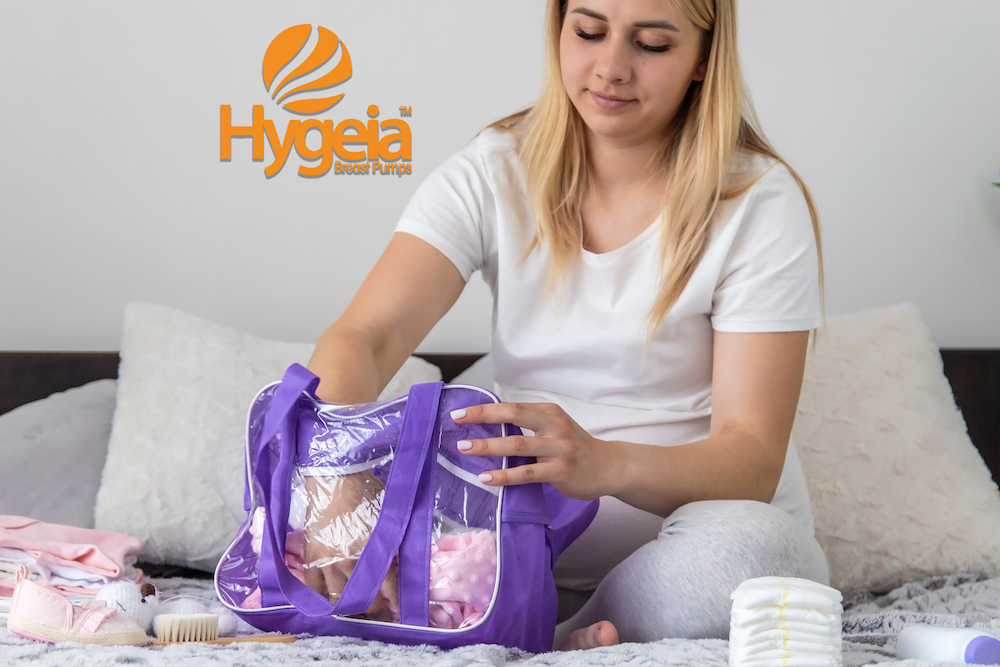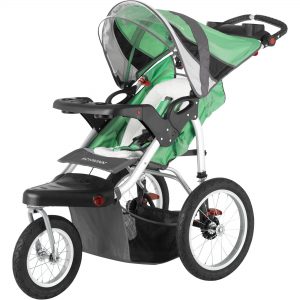
Many moms worry about not pumping a normal amount of breast milk particularly when they are dependent upon pumping. It’s easy to compare yourself to others, or to feel discouraged if you don’t see large volumes of milk. But the truth is, there’s a wide range of “normal” when it comes to pumping output. Let’s clear up some common misconceptions and help you understand what to expect.
The “Normal” Breast Milk Output Range is Wide
There’s no single number that defines a “good” pumping session or how “good” your overall supply is. Factors like your baby’s age, time of day, how often you pump, and your individual body all play a role. Some moms might consistently pump several ounces per session, while others might only get a fraction of that. Both can be perfectly normal.
Exclusively pumping mothers: Seeing between 2-4 ounces combined from both breasts during a pumping session every 2-3 hours is often considered the high end of the pumping spectrum and reserved for moms who exclusively pump.
Mothers primarily breastfeeding / pump occasionally: Seeing smaller amounts, sometimes as little as 0.5 to 2 ounces per session, is completely normal for a mother only occasionally pumping. This is no reflection of an overall low milk supply.
Pumped Amount Isn’t a Direct Measure of Supply
It’s important to understand that pump output doesn’t always reflect your total milk supply. Babies are often more efficient at removing milk than pumps. If your baby is gaining weight well and producing plenty of wet and dirty diapers, you’re likely making enough milk, even if your pump output seems low.
Factors Affecting Breast Milk Pumping Output
Baby’s Age: In the early weeks, when your milk supply is still establishing, you might pump smaller amounts. As your baby gets older and your supply regulates, you might see an increase.
Time of Day: Milk supply is often higher in the morning. You might notice a difference in output between morning and evening pumping sessions.
Pumping Frequency: The more often you pump, the more milk you’ll likely produce. Regular and frequent milk removal signals your body to make more milk.
Pump Type and Fit: A good quality pump with properly fitted flanges is essential. A poor fit can significantly reduce milk output.
Stress and Relaxation: Stress can inhibit milk flow. Try to relax and create a calm environment before and during pumping.
Hydration and Nutrition: Staying well-hydrated and eating a balanced diet supports milk production.
Common Misconceptions
It’s completely normal to have concerns over your milk supply or to question whether or not your body is doing “enough.” This is commonly spurred along by misconceptions that permeate the breastfeeding world. Let’s clear up some of these points of confusion.
“If I don’t pump a lot, I don’t have enough milk.”
This is a common misconception. As stated before, pumping output is not a direct indication of your overall milk supply.
“Everyone else pumps more than me.”
Social media can create a false sense of what’s “normal.” Remember that everyone’s body is different. Try following some accounts of certified lactation consultants or breastfeeding experts.
“I need to pump a full bottle every time.”
This is not always the case. Small, frequent pumping sessions can be just as effective as longer sessions.
What to Focus On
Try to focus on the things that indicate the state of your breastfeeding journey. These things will also help you know how to adjust and change.
Baby’s Cues: Pay attention to your baby’s hunger cues and feeding behaviors.
Weight Gain and Diaper Output: These are the best indicators of whether your baby is getting enough milk.
Consistency: Pump regularly and consistently to maintain your milk supply.
Proper Pump Fit: Ensure your pump flanges fit correctly.
How Hygeia Health Can Help:
A quality breast pump can make a significant difference in your pumping experience. At Hygeia Health, we’re dedicated to providing moms with reliable and effective breast pumps, which can make a huge difference in your breastfeeding journey, especially if you are pumping to maintain your milk supply.
Don’t miss out on the opportunity to get a 100% insurance-covered breast pump and make your breastfeeding journey smoother and more successful. Don’t let pumping output discourage you. Focus on your baby’s cues, and trust your body. Remember, you’re doing a great job!

Congratulations! You’ve reached the six-month mark in your breastfeeding journey. This is a huge accomplishment, and you and your baby have likely established a rhythm that works for you. But as your baby grows and develops, breastfeeding can change. This post will explore some common challenges and solutions for breastfeeding babies six months and older, and how a good breast pump can continue to support your journey.
Decreased Frequency of Feedings
As your baby starts solids, they may nurse less often. This is normal. Offer the breast before solids to ensure they are still getting the majority of their nutrition from breast milk. Continue to respond to their hunger cues, and don’t worry if the frequency changes.
Managing Distractions
Older babies are more aware of their surroundings. They might get distracted while nursing. Try breastfeeding in a quiet environment with minimal stimulation. You can also try nursing while your baby is sleepy or in a carrier.
Changes in Milk Supply
Your milk supply might adjust as your baby’s needs change. This is usually a natural process. Continue to nurse on demand and pump if needed to maintain your supply. If you have concerns about your milk supply, talk to a lactation consultant.
Returning to Work
If you’re returning to work, pumping becomes essential. Establish a pumping routine that mimics your baby’s feeding schedule. A good quality breast pump can make all the difference in maintaining your milk supply and making pumping at work more manageable.
Weaning
Some babies start to wean naturally around this age, while others continue to breastfeed for much longer. Follow your baby’s lead. If they are showing signs of weaning (like refusing the breast or being more interested in solids), respect their cues. If you want to continue breastfeeding, keep offering the breast and pumping as needed.
Teething
Teething can sometimes make breastfeeding uncomfortable. Offer your baby chilled teethers before nursing. If your baby is biting, gently break the suction and offer them a teether. Consistency is key.
Changes in Sleep Patterns
Sometimes, babies who previously slept well might start waking more frequently at night. This can be related to developmental leaps, teething, or simply wanting comfort. Offering the breast can be a soothing way to help them back to sleep.
The Importance of Continued Breastfeeding
Even as your baby explores solid foods, breast milk continues to provide essential nutrients, antibodies, and immune protection. The World Health Organization recommends breastfeeding until at least two years of age, or for as long as mother and baby desire.
How a Breast Pump Can Help:
A reliable breast pump can be invaluable for mothers breastfeeding older babies. It can help:
- Maintain milk supply, especially when separated from your baby
- Provide expressed milk for when you’re away or if your baby needs extra
- Relieve engorgement
- Support your breastfeeding journey as your baby grows and changes
At Hygeia Health, we understand the importance of having a quality breast pump. All moms should have access to one, and that’s why we help moms get a 100% insurance-covered breast pump. A reliable breast pump can make a huge difference in your breastfeeding experience, especially as your baby gets older and your needs change.
Breastfeeding beyond six months is a remarkable achievement. While there may be challenges, remember that you and your baby are a team. Trust your instincts, seek support when needed, and enjoy this special time.

Giving birth is a big event and preparing for labor and delivery can feel overwhelming, but packing your hospital bag doesn’t have to be. This hospital bag checklist will help you gather everything you need for a comfortable and smooth experience, so you can focus on welcoming your little one.
For Mom: Comfort and Essentials
First and foremost, pack for yourself. Here is what you should prioritize:
Comfortable Clothing: Pack a few loose-fitting gowns or pajamas for labor and postpartum. Consider something you don’t mind getting messy. A robe and slippers are great for walking around the hospital.
Socks: Technically, this fits with clothing, but it’s important enough for its own bullet item. Hospitals can be chilly, so bring a few pairs of warm socks.
Toiletries: Bring travel-sized toiletries like shampoo, conditioner, toothpaste, a toothbrush, and deodorant. Some hospitals provide these, but having your own familiar brands can be comforting.
Personal Care Items: Don’t forget essentials like your glasses or contacts case, lip balm (hospital air can be dry!), hair ties, and any medications you regularly take.
Pillow: Your own pillow can make a big difference in comfort. Label it clearly so it doesn’t get mixed up with hospital linens.
Snacks: Labor can be long, and you might want snacks for yourself (check hospital policy on food during labor). Pack healthy options like granola bars, dried fruit, or nuts. After delivery, snacks will be helpful as well.
Phone and Charger: Capture those precious first moments and stay in touch with loved ones.
Going-Home Outfit: Choose something comfortable and loose-fitting. Remember, you’ll still have a postpartum belly.
Postpartum Essentials: The hospital will likely provide some postpartum supplies, but you might want to bring your own, like extra-long pads and a peri bottle.
For Breastfeeding
If you plan to breastfeed, you’ll want to be prepared with all the goods in case the hospital cant supply them.
Breast pump: Bringing your breast pump to the hospital can be helpful even if you don’t intend to pump right away. This allows you to get familiar with it and ask the hospital’s lactation consultant any questions about it while there. A pump can also be helpful in establishing your milk supply.
Nursing bra: A supportive and comfortable nursing bra is essential. Pack a couple, as they can get messy.
Nursing pads: Leaking is common, especially in the early days. Nursing pads will keep you dry and comfortable.
Nipple cream: In case of cracked, sore or dry nipples, nipple cream is a must-have. It can provide relief and promote healing. Lanolin-based creams are a popular choice.
Lactation consultant information: Have the contact information for a lactation consultant readily available in case you need support. Your hospital may also have them on staff.
For Baby: Comfort Items
While a mother can provide all newborn truly needs, there are a few additional items that can bring him or her comfort.
Onesies: Pack a few onesies in different sizes (newborn and 0-3 months). No matter how the baby is measuring pre-birth, he or she could be any size and you want to be ready.
Socks or Booties: Keep those tiny feet warm.
Hats or mittens: While the hats are for warmth, the mittens are for safety. Believe it or not, baby fingernails can turn dangerous quickly, so the protection from scratches will be appreciated.
Swaddles or Blankets: Bring a soft blanket for swaddling and a receiving blanket for the trip home.
Going-Home Outfit: Choose something cute and comfortable for your baby’s first journey home.
Car Seat: This is essential for safely transporting your baby home. Make sure it’s properly installed in your car.
Optional items:
You don’t want to overpack, but here are some items to consider bringing to make your stay more relaxed.
Entertainment: Books, magazines, or a tablet can help pass the time during labor. It’s better to have them and not need them, rather than finding yourself in need of a distraction.
Music: Create a playlist of calming or uplifting music. You might have a playlist for labor and another for rocking and cuddling your baby after delivery.
Essential Oils: If you use essential oils, check with the hospital about their policies, especially before using a diffuser.
Small Gift for Siblings: If you have other children, a small gift for them can make them feel included when they come to meet their new baby brother or sister.
Thank You’s: Consider pre-writing thank you notes for the hospital staff. Another idea is to bring a snack or treat to leave at their circulation desk as another way of saying thank you for their support during this special time.
Tips for Packing Your Hospital Bag:
Here are a few additional tips to keep top of mind while packing.
Pack early: Aim to have your bag packed by 36 weeks of pregnancy. It can’t hurt to be prepared.
Use a smaller bag: This will prevent you from overpacking.
Organize your bag: Use smaller bags or pouches to separate items. Keep in mind that someone else (your partner, parent, or a nurse) could be the one going through your bag to get items you need. This will making finding the right thing easier.
Keep essentials accessible: Place items you’ll need during labor in an easily accessible spot.
Hygeia is here to support you:
At Hygeia Health, we believe every mom deserves access to a high-quality breast pump and we’re committed to supporting breastfeeding journeys. A reliable breast pump can make a huge difference in your breastfeeding experience, so we help moms get a 100% insurance-covered breast pump. Don’t miss out on this opportunity to make your breastfeeding journey smoother and more successful.
Packing your hospital bag is an exciting step in preparing for your baby’s arrival. With this checklist and a little planning, you’ll be ready for anything!

Pregnancy is a wild ride, and your body is in for quite a transformation. One of the biggest changes you’ll notice is how your breasts grow and change. Pregnancy brings incredible changes to your body, including how your breast change during pregnancy and breastfeeding. Maybe you’re up for that; maybe you dread it. Either way, understanding what’s going on can help you feel more comfortable and ready for the journey ahead.
Physical Changes
As your body adapts to the demands of pregnancy, you’ll notice significant changes in your breasts. From increased sensitivity to the production of colostrum, these changes are all part of a natural process that prepares you for breastfeeding. Let’s first take a closer look at how these changes progress.
Hormonal Changes: Not the pregnancy hormones! Actually, these hormones are exactly what your body needs. During pregnancy, your body produces increased levels of estrogen and progesterone. These hormones play a role in uterine growth, placenta formation, and, you guessed it, breast growth.
Increased Blood Flow: Worried about your sensitive breasts? Don’t be! It’s completely normal. It’s often something that tips off a mom to her pregnancy before she’s even taken a test. As your breasts grow, they require more blood flow to support their development. This increased blood flow can sometimes cause your breasts to feel tender or sensitive.
Milk Ducts: The milk doesn’t just show up along with your baby. During pregnancy, your body begins to develop milk ducts. These ducts are tiny tubes that carry milk from the milk-producing glands to your nipples. While they will develop during your pregnancy, it will be the routine breastfeeding and/or pumping that will maintain them after delivery.
Colostrum: Get ready for liquid gold! In the later stages of pregnancy, you may begin to produce colostrum. Colostrum is a thick, yellow fluid that is rich in nutrients and antibodies. It is the first milk that your baby will receive after birth, so it’s good news if you notice it in the final days of pregnancy.
Preparing for Breastfeeding
It is important to take care of your breasts during pregnancy to prepare for breastfeeding. Here are a few tips:
Wear supportive bras: As your breasts grow, it is important to wear bras that provide adequate support. You not only want comfort for you, but the best support for your growing and changing breasts.
Massage your breasts: Gently massaging your breasts can help stimulate milk production and improve your milk flow. This can also help prevent clogged milk ducts.
Learn about breastfeeding: Taking a breastfeeding class or reading books about breastfeeding can help you feel more prepared. While your phone may be able to answer anything on the spot, it’s best to already have reliable resources in a pinch.
Embrace the Changes
Pregnancy is a time of incredible change. By understanding the changes that your breasts are going through, you can feel more prepared and confident for breastfeeding.
At Hygeia Health, we understand the importance of breastfeeding and the challenges that mothers may face. Our high-quality breast pumps are designed to make pumping easier and more efficient, allowing you to focus on bonding with your baby.
We also offer resources and support to help mothers on their breastfeeding journey. Our website provides information on breastfeeding and pumping, and our customer service team is available to answer your questions.
Get a Free Breast Pump
We believe that every mother should have access to the tools and support they need to breastfeed their baby. To apply for a free breast pump, simply visit our website and fill out the application form. We’ll review your application and contact you with the next steps.


BREASTFEEDING
7 Raw Breastfeeding Photos Uncover A Rarely-Talked About Side
As a breast pump company, obviously breastfeeding and pumping go hand-in-hand in our thought-process. The same cannot be said for much of the population. People thinking “nursing mother” and they think special tucked away moments between mother and child in a cozy chair, rocking baby. It is likely they never think of a mom hidden in a corner hooked up to a machine while in work attire and expressing milk just so she can bag it up and get back to her job.
Photographer Leah DeVun has a wonderfully moving photo project she titled In The Age Of Mechanical Reproduciton that features images of women using breast pumps. [See more here.]

Images: Leah DeVun
PREGNANCY
What Makes Pregnancy Labor Progress?
They say every month has about 30 days, except the final month of pregnancy which has 3,053 days! Once you hit the point of full term, most moms are totally ready for labor to start and have their water break on the kitchen floor. (Spoiler: most moms do not experience a Hollywood style water break and instead the doctor breaks it for them while in the hospital!) If you are ready to get the show on the road, there are no natural guarantees, but some of these recommendations have helped others. [Read more here.]

Test Your Baby Name
Having trouble deciding on your baby name? Or maybe you have one, but you are still hesitant to commit? We understand. In some ways it feels like you are defining your child’s future. (Even though that is ridiculous!) But there are things to consider. This list has a lot of the top questions to ask yourself about a name before committing. Saying the name out loud for hypothetical situations is beneficials as well. (How will it sound being shouted in your ‘you are in big trouble’ voice?) [Read more here.]

MOTHERHOOD
A Book’s Content Matters More To Kids’ Learning Than Whether It’s Digital Or Print, Study Finds
Read. To. Your. Kids. I am sure you have been told that it is kind of important. It definitely is; so much so, that new studies are saying how the kids consume reading is not as important as the reading itself. Parents who give their children tablets or phones are sometimes scolded or looked down on because of “too much screen time,” but maybe the child is still benefitting.
“While many studies over the years have vacillated on whether digital books are good for youngsters (or any reader, really) a recent study found that when it comes to reading comprehension, the format might not be the most important thing. A book’s content matters more to kids’ learning than whether it’s digital or print — at least for preschoolers.” [Read more here.]

6 Common Parenting Habits That Are Hurting Your Health
As a parent, it is easy to be so focused on taking care of the kids that you forget to also take care of yourself. But keep in mind, you cannot take care of your kids if you get sick!
“[U]nlike biting your nails or chewing with your mouth open, there are actually quite a few common parenting habits you don’t realize are killing you. I’m not talking about turning into a meth manufacturer to save your family from debt, a la Walter White. I’m talking about everyday habits that are harmful mentally and physically.”
Take a read and see which of these habits are a part of your daily routine and figure out how you can remedy them sooner rather than later. Your kids need you healthy, mama! [Read more here.]

INFANTS
17 Questions You’ll Ask Yourself the First Time Your Baby Sleeps Through the Night
What’s that noise? Wait, nothing? Not your baby? The first night your baby sleeps through the night, in theory, is a dream come true. What more could you want after nights of up and down, intermittent sleep? More than likely, though, you won’t sleep through the night despite how at peace your babe may be. You will wonder and worry. We are doing our best to help you in advance. Read through these questions and know, every parent runs through question after question on the first occasion of baby’s sweet slumber-filled night. [Read more here.]

New moms: which stroller is right for you and your baby?
As a new mom, figuring out what baby products to list on your registry can be really overwhelming. It is especially hard to decide on some of the more costly products. Which pacifiers to buy? Who knows… Buy several kinds to see what works. The same cannot be said for a stroller. (Unless maybe you are a Kardashian and can afford one in every brand and color.) For the rest of us, we need some guidance for the one perfect fit. (Or at least best fit.) Use this post to learn more about these five strollers that were used by a mom like you. [See stroller reviews here.]

TODDLERS
6 Ways to Encourage Toddlers to Actually Sit Still and Eat Already
How do you find the balance of not having half-filled plates of food sitting out from meal to meal, but not being cruel and snatching away your kid’s food before they’ve eating a sufficient amount? Toddlers are the worst at not simply sitting and completing a meal. Even when they like the food you put in front of them, they easily become distracted and can have trouble sitting still and focusing on finishing their plate.
“Toddlers are busy little people,” says Natalia Stasenko MS, RD, CDN, of Tribeca Nutrition. “Plus, their growth slows after 12 months, so they do not need as many calories. So sitting down for meals is not their priority.”
The good news is, there are ways to reign in your child’s all-over-the-place eating habits and this article includes advice from professionals. [Read more here.]

Pics That Will Make You Feel Better About Your Current Situation
There is a season of life all parents endure through it’s ups and downs: toddlerhood. While dealing with meltdowns, weirdness at home can drive you close to the edge, you can always change up the vibe and escape the house. Experiencing the extreme situations of being the parent of a toddler in public is another story. You feel all of the heads turning and watching. You even feel the ones actively making a point not to stare. But the Instagram account Kids Are The Worst does a great job of bringing parents together in their moments of “glory” (or lack thereof). Misery loves company, right? Check out a compilation of classic moments shared from this Instagram account here.

IMAGE VIA INSTAGRAM/ KIDS ARE THE WORST















